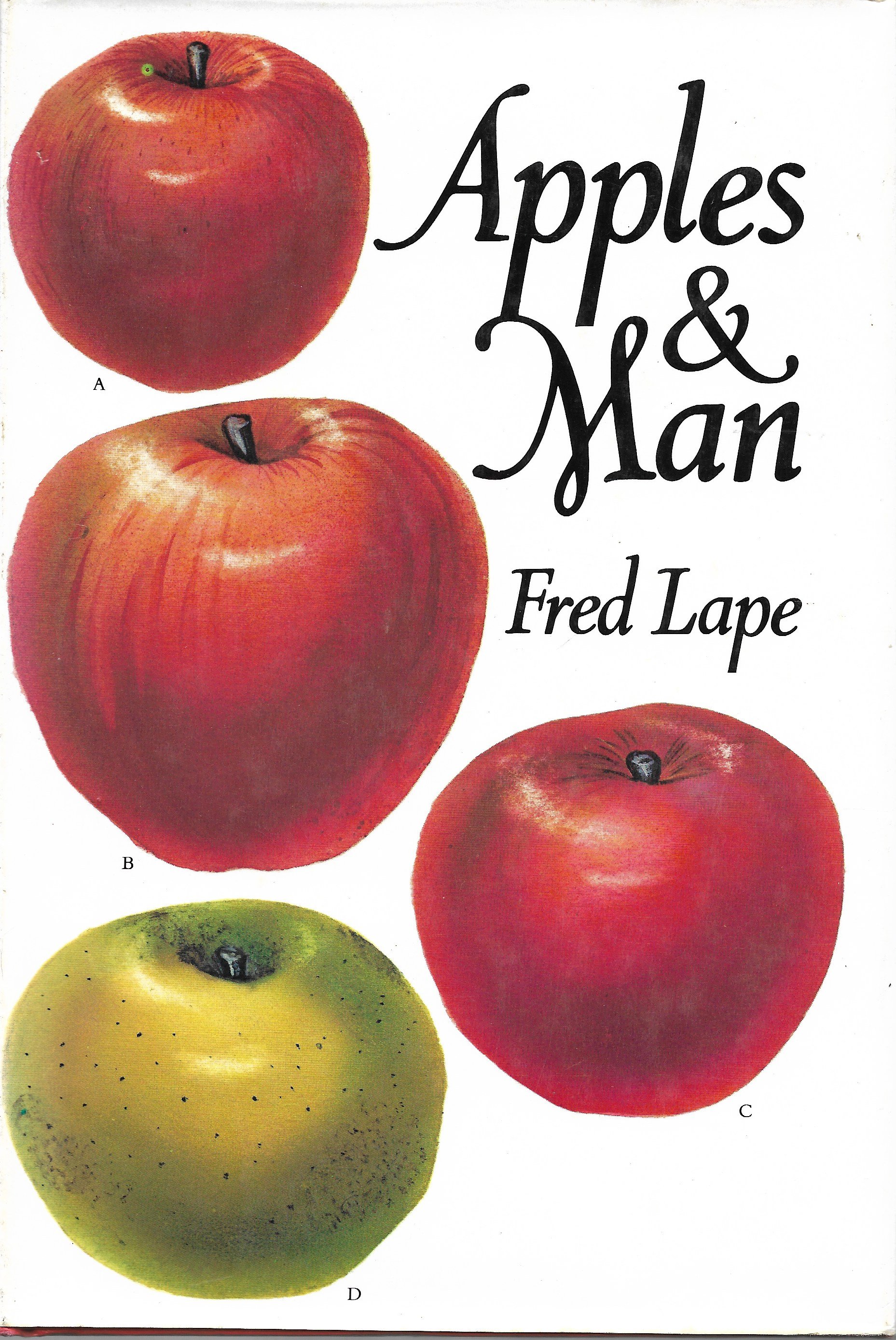 Image 1 of 1
Image 1 of 1


Apples & Man
Fred Lape, 1979, Van Nostrand Reinhold, 160 pages with index, hardcover.
Rare, very good condition, pages clean and bright, binding tight, dust jacket show minor shelf wear.
This book is a natural history of apples. Its ten chapters cover the following topics: the genus Malus, the spread of the apple in North America, apple varieties, the ascendancy of mediocrity in the apple world (aka Delicious and Golden Delicious), the nightmare of standard orchard chemicals, the medical benefits of eating apples, the propagation of apples, crabapples, and apples in other parts of the world. At the end of the book are a list of apple sources, a glossary, a bibliography, and an index.
Lape's style is quite accessible for general readers. He is an apple connoisseur, and he wants others to come to share his passion. He grew up on a farm in upstate New York that had many old apple trees. This early exposure to a variety of types of apples makes him extremely dissatisfied with apples such as the Delicious, which was bred for color, bearing, and shipping qualities but has virtually no taste. He is also quite concerned with the chemicals commonly used in commercial orchards, which not only poison animals, the soil, and workers, but also leave residues on your fruit that may wind up in your food. He suggests for consumers to either grown their own trees if they have a backyard, choosing heirloom varieties for taste, or, lacking a yard, purchase local apples from small farms, which will probably taste a lot better than those horrible Delicious apples on supermarket shelves. If you must purchase your apples at a supermarket, then ask the manager to carry something more exciting than Delicious- -Macintosh apples, for example, at least have some flavor.
Fred Lape, 1979, Van Nostrand Reinhold, 160 pages with index, hardcover.
Rare, very good condition, pages clean and bright, binding tight, dust jacket show minor shelf wear.
This book is a natural history of apples. Its ten chapters cover the following topics: the genus Malus, the spread of the apple in North America, apple varieties, the ascendancy of mediocrity in the apple world (aka Delicious and Golden Delicious), the nightmare of standard orchard chemicals, the medical benefits of eating apples, the propagation of apples, crabapples, and apples in other parts of the world. At the end of the book are a list of apple sources, a glossary, a bibliography, and an index.
Lape's style is quite accessible for general readers. He is an apple connoisseur, and he wants others to come to share his passion. He grew up on a farm in upstate New York that had many old apple trees. This early exposure to a variety of types of apples makes him extremely dissatisfied with apples such as the Delicious, which was bred for color, bearing, and shipping qualities but has virtually no taste. He is also quite concerned with the chemicals commonly used in commercial orchards, which not only poison animals, the soil, and workers, but also leave residues on your fruit that may wind up in your food. He suggests for consumers to either grown their own trees if they have a backyard, choosing heirloom varieties for taste, or, lacking a yard, purchase local apples from small farms, which will probably taste a lot better than those horrible Delicious apples on supermarket shelves. If you must purchase your apples at a supermarket, then ask the manager to carry something more exciting than Delicious- -Macintosh apples, for example, at least have some flavor.